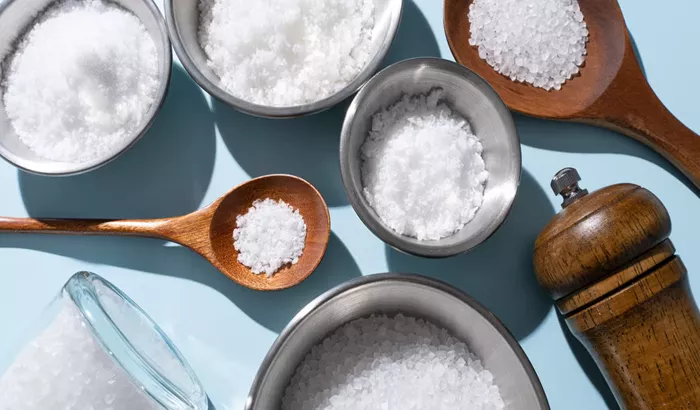A recent study suggests that replacing regular salt with salt substitutes could lower the risk of recurrent stroke and death. The research shows that salt substitutes reduce stroke-related mortality by 12% and the likelihood of a recurrent stroke by 14%.
This study, published on February 5 in JAMA Cardiology, aligns with the World Health Organization’s guidelines on reducing sodium intake. Experts say salt substitutes are an easy, low-cost way to lower blood pressure and reduce the risk of stroke.
The findings are based on a large-scale analysis of over 15,000 people with a history of stroke. These participants were either given regular salt or a salt substitute made of 75% sodium chloride and 25% potassium chloride. The results revealed that those using salt substitutes had lower rates of recurrent stroke, particularly hemorrhagic stroke, and lower mortality rates compared to those using regular salt.
Salt Substitutes Proven to Lower Stroke Risks
The study is part of the Salt Substitute and Stroke Study (SSaSS), which involved participants from 600 villages across five provinces in northern China. On average, participants were followed for almost five years. Researchers found that using salt substitutes significantly reduced the risk of recurrent stroke and death.
“Salt substitutes have proven to be an effective, cost-effective solution for stroke survivors. This simple dietary change offers substantial health benefits,” said the study authors. Their findings back up previous research showing that reducing sodium and increasing potassium can lower blood pressure, a major risk factor for stroke.
The Impact on Hemorrhagic Stroke
While the study’s findings aren’t entirely new, experts agree the scale and duration of this research are important. “This study provides strong evidence of the benefits of using salt substitutes, especially for people who have already had a stroke,” said Dr. Paul George, a professor at Stanford University.
The U.S. sees a stroke every 40 seconds, and nearly 1 in 4 strokes are recurrent. With stroke risk factors such as high blood pressure, smoking, and obesity affecting millions of Americans, diet plays a critical role. Experts stress that managing blood pressure, especially after a stroke, is vital for reducing the risk of further strokes.
What Are Salt Substitutes?
Salt substitutes replace some sodium chloride with potassium chloride. In the JAMA Cardiology study, the substitute used contained 75% sodium chloride and 25% potassium chloride. These substitutes can be found in most grocery stores and may help lower blood pressure.
Excess sodium in the diet can lead to higher blood pressure by causing the body to retain more water. Potassium, on the other hand, does not have the same effect, which is why it helps balance the sodium-water ratio and reduces blood pressure.
WHO Guidelines on Sodium Reduction
The World Health Organization (WHO) recommends adults reduce their daily sodium intake to less than two grams. For those using table salt, WHO suggests replacing it with lower-sodium alternatives like salt substitutes containing potassium.
Experts agree that salt substitutes should be promoted, particularly in populations with high stroke rates. However, those with kidney issues should consult a doctor before using substitutes that contain potassium.
Salt substitutes offer an affordable, practical solution to reduce stroke risk, especially for people with cardiovascular conditions.
Read more:
- Over 12 Million People Affected By Diabetes Or Prediabetes In The UK, New Report Reveals
- Age Gracefully: Top 6 Vitamins And Minerals For Your Healt
- New Hair Test Offers Hope For Early Autism Detection


